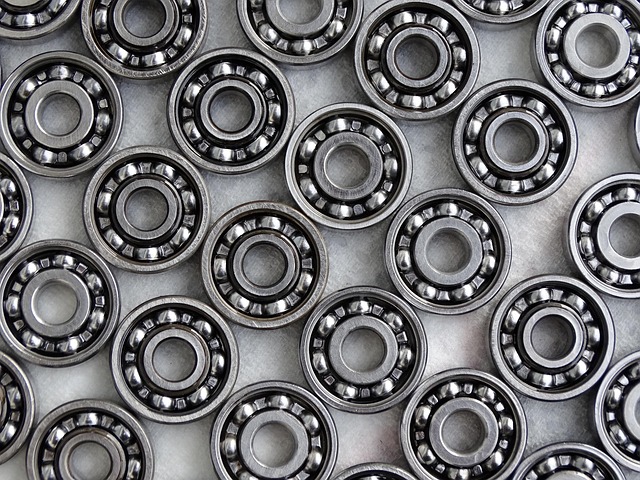Osteoarthritis: When Cartilage Components Go Awry
Osteoarthritis (OA) isn't just 'wear and tear'; it's a complex joint disease involving cartilage breakdown, bone spurs, inflammation, and significant pain. At the heart of healthy cartilage lies a vital component: proteoglycans (PGs), particularly the large molecule aggrecan. These molecules give cartilage its shock-absorbing, compressive strength. When their production (synthesis) goes wrong, it's a key driver of OA progression.
The Role of Aggrecan in Cartilage Function

Think of aggrecan like a bottle brush: a central protein core with bristly glycosaminoglycan (GAG) chains radiating outwards, primarily chondroitin sulfate and keratan sulfate. These GAG chains are loaded with negative charges, acting like tiny magnets for water molecules. This water-trapping ability creates a swollen, hydrated matrix that cushions joints against impact, making aggrecan the most abundant and vital PG in articular cartilage.
In OA, there's often less aggrecan, and the structure of its GAG chains (like the pattern of sulfate groups crucial for water binding) can change. This weakens the cartilage's water-holding capacity, making it less resilient, more prone to damage under load, and eventually leading to breakdown.
Mechanisms of Altered Proteoglycan Synthesis in OA

Several factors disrupt the delicate balance of PG production and breakdown in OA:
- Increased activity of catabolic enzymes (e.g., matrix metalloproteinases (MMPs) and aggrecanases) that actively chop up aggrecan and other matrix components.
- Reduced signaling by anabolic factors (e.g., transforming growth factor-beta or TGF-β) that normally instruct cartilage cells (chondrocytes) to build new matrix.
- Inflammatory cytokines (e.g., interleukin-1β (IL-1β) and tumor necrosis factor-alpha (TNF-α)), which are inflammatory messengers that suppress PG production and simultaneously ramp up degradation.
- Age-related changes reducing chondrocyte efficiency and responsiveness over time.
For instance, the inflammatory cytokine IL-1β acts like a double-edged sword: it tells chondrocytes to stop making aggrecan while also stimulating the production of destructive MMP enzymes, accelerating cartilage breakdown.
Research Methods for Studying Proteoglycan Synthesis
Researchers use various techniques to investigate PG synthesis and breakdown:
- Quantitative PCR (qPCR) to measure gene expression levels (like aggrecan), indicating the cell's 'intent' to produce PGs.
- Immunohistochemistry to visualize PG distribution and localization within cartilage tissue sections.
- Biochemical assays (e.g., DMMB assay) to quantify total GAG content, providing a measure of these crucial sugar chains.
- Mass spectrometry to analyze GAG chain structure and sulfation patterns in detail, revealing qualitative changes.
- In vitro cell culture using chondrocytes exposed to OA-related stimuli (like IL-1β) to model disease processes in a controlled lab setting.
# Example: Analyzing DMMB assay data for GAG quantification
import numpy as np
import matplotlib.pyplot as plt
# Sample data: Known GAG concentrations and corresponding absorbance readings
concentration_ug_ml = np.array([0, 10, 20, 30, 40, 50]) # GAG concentration (ug/mL)
absorbance_525nm = np.array([0.1, 0.3, 0.5, 0.7, 0.9, 1.1]) # Absorbance readings at 525 nm
# Perform linear regression (Absorbance = m * Concentration + b)
# m = slope, b = y-intercept
m, b = np.polyfit(concentration_ug_ml, absorbance_525nm, 1)
# Plot the raw data points
plt.plot(concentration_ug_ml, absorbance_525nm, 'o', label='Calibration Data')
# Plot the linear regression line
plt.plot(concentration_ug_ml, m * concentration_ug_ml + b, '-', label=f'Fit: y={m:.3f}x + {b:.3f}')
# Add labels and title for clarity
plt.xlabel('GAG Concentration (µg/mL)')
plt.ylabel('Absorbance (525 nm)')
plt.title('DMMB Assay Calibration Curve Example')
plt.legend()
plt.grid(True)
plt.show()
# This calibration curve allows determining GAG concentration in unknown samples based on their absorbance.Therapeutic Strategies Targeting Proteoglycan Synthesis
Restoring the balance of PG synthesis and degradation is a key goal for OA therapies. Potential strategies being investigated include:
- Administering growth factors (like TGF-β family members) to stimulate chondrocytes to produce more PGs.
- Inhibiting catabolic enzymes using MMP or aggrecanase inhibitors to slow down PG degradation.
- Delivering anti-inflammatory molecules or blocking pro-inflammatory signals (like IL-1β or TNF-α) to reduce their negative impact.
- Using gene therapy approaches to potentially instruct chondrocytes to enhance production of aggrecan or other beneficial molecules.
- Employing cell-based therapies (e.g., mesenchymal stem cells) aiming to replace damaged cells or foster a regenerative environment.
Conclusion: Targeting Proteoglycans for Future OA Therapies
Understanding how proteoglycan production falters in OA opens new doors for treatment. By targeting the underlying mechanisms—boosting synthesis, blocking degradation, and controlling inflammation—researchers aim to develop therapies that don't just manage symptoms, but potentially halt or even reverse cartilage damage, offering hope for improved joint health and function.